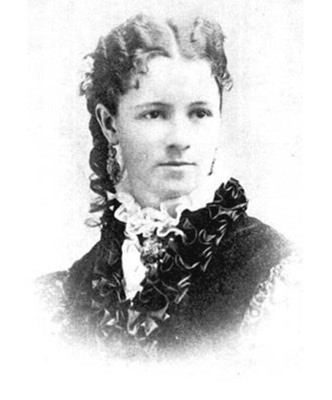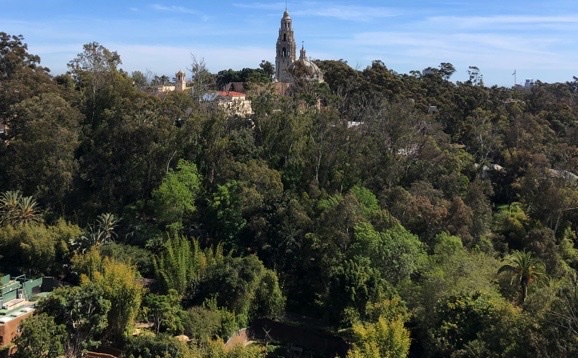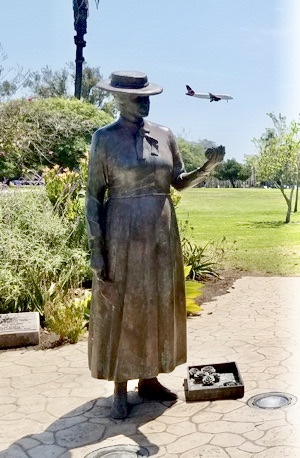One of the crowning jewels of Sand Diego is Balboa Park, a 1200-acre expanse overlooking downtown San Diego. Once the park, as well as most of San Diego, was mostly barren. But not today. The beautiful botanical gardens of the park are the work of a pioneering woman, horticulturist Kate Sessions, known as the “Mother of Balboa Park.”

Katherine Olivia Sessions was born in San Francisco on November 8, 1857 (died 1940). Like her mother, she became an avid gardener, plant collector and flower arranger. She graduated from the University of California, Berkeley, in 1881, having studied chemistry and agriculture. Following the usual path of educated women of her time, she became a teacher and moved to San Diego.
Her interest in plants never left her, however, and she left the schoolroom to go into the nursery and flower business with friends in 1885. Her business flourished, as did her reputation as a botanist and landscaper. In 1892, she formed a partnership with the City of San Diego in which she acquired rights to use a 32-acre tract within what was then called City Park as a plant nursery. In exchange, she was required to plant 100 trees annually in City Park and supply 300 trees for other municipal lands. That partnership lasted for a decade and began the lush landscape that the park—renamed Balboa Park in 1915—is known for.

Sessions began to travel extensively—trips to Hawaii, Mexico and across Europe—to observe plants in their native environments and bring home seeds and specimens for introduction into the gardens of San Diego. Many of the largest and oldest trees still surviving in Balboa Park were planted personally by Sessions (today, she gathers some criticism for having introduced non-native plants to southern California, but she also provided habitat for several rare Mexican species that might have disappeared without her intervention).
She was a founding member of the Sand Diego Floral Association and helped create the first Arbor Day in the city in 1904. She was a prolific author, speaker and educator about plants, gardens and landscape architecture. For decades, she taught horticulture to public school children and personally managed the landscapes around public schools in San Diego. In her commercial nurseries, she grew test plots of species and cultivar for the U.S. Department of Agriculture. She won the Frank N. Meyer Medal of the American Genetic Association in 1939 for her work in plant introduction.
Sessions will always be most closely associated with Balboa Park. In 1935, at the California Pacific International Exposition held in the park, she was formally crowned with the loving title of “Mother of Balboa Park.” The park hosts nearly 5 million visitors each year, half of whom are local residents who use the park on average ten times per year—that makes over 25 million visitor days per year, generating an economic impact of $350 million annually.

I’m reminded of the sentiment by Margaret Mead, never to doubt that a few dedicated people can change the world. Kate Sessions certainly changed hers, and ours, through the living joy of plants.
References:
Balboa Park. Balboa Park History. Available at: https://www.balboapark.org/about/history. Accessed March 2, 2022.
Carter, Nancy Carol. About Kate.. Available at: https://katestrees.org/about-kate/. Accessed March 2, 2022.
San Diego History Center. Kate Sessions 1857-1940. Available at: https://sandiegohistory.org/archives/biographysubject/sessions/. Accessed March 2, 2022.
San Diego Natural History Museum. Kate Sessions. Available at: https://www.sdnhm.org/blog/blog_details/kate-sessions-a-legendary-san-diego-icon/99/. Accessed March 2, 2022.
Testa, Mark R., et al. 2017. Balboa Park Benefits Study. San Diego State University. Available at: http://balboaparkconservancy.org/wp-content/uploads/2017/09/Balboa-Park-Benefits-Study-2017.pdf. Accessed March 2, 2022.
